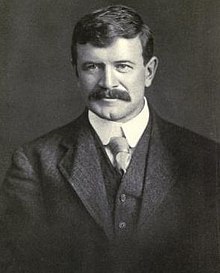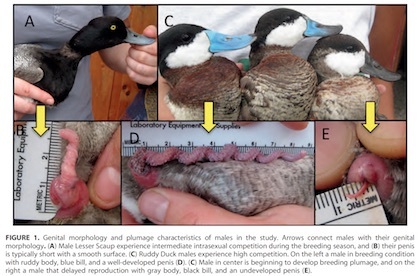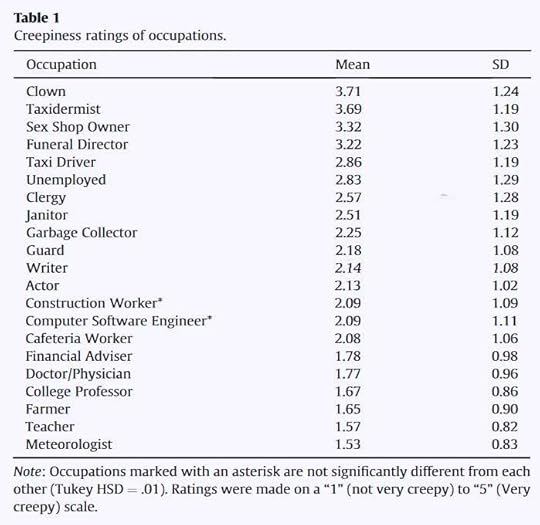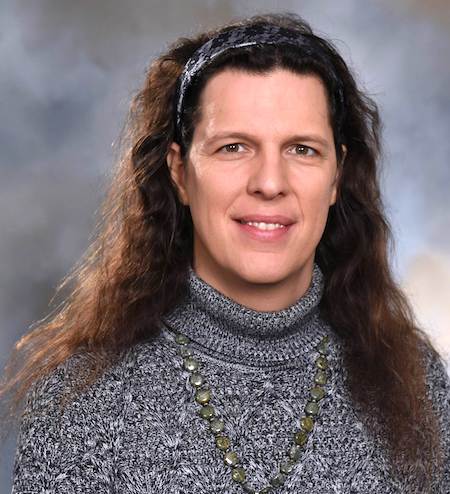Marc Abrahams's Blog, page 206
October 26, 2017
How Sexy can a Paper Clip get? (study)
In 2016, Prof. Dr. Georg Felser of Harz University of Applied Sciences, Germany, undertook a unique research study aimed at establishing whether everyday objects can be somehow be imbued with ‘sexiness’ in order to enhance returns in advertising campaigns. His experimental study found that, yes, they can – even if the object is paper clip.
“Marketing practitioners claim that sex in advertising only works for products that are related to sex. The presented experiment underpins that this folk hypothesis is not true. Via semantic conditioning (a variant of evaluative conditioning) erotic meanings can be transferred to any product including those totally unrelated to sex.”
To find out how, consult : ‘How Sexy Can a Paper Clip Get? Evidence For the Transfer of Erotic Meaning to “Unsexy” Products’ which can be read in full here. (Advances in Consumer Research, Volume 44, 2016).
Also see : The Paper Clip and the Law
Coming Soon: Medical uses for paper clips.

October 25, 2017
When were World Standards Day?
Congratulations to everyone who celebrated World Standards Day, on October 14, 2017. The official announcement explains:
Each year on 14 October, the members of the IEC, ISO and ITU celebrate World Standards Day, which is a means of paying tribute to the collaborative efforts of the thousands of experts worldwide who develop the voluntary technical agreements that are published as international standards.
The USA celebrated World Standards Day on October 19, 2017. The official announcement says:
World Standards Day was initially launched in 1970, and is now celebrated by nations around the globe. U.S. activities are organized annually by a planning committee consisting of representatives from the standards and conformity assessment community.
Last year, 2016, as per standard, World Standards Day were celebrated in a similar manner, as was the case in years previous to 2016.

October 24, 2017
The perfect index
 Stephen Leacock explained, a century ago, about book indexes. His essay begins:
Stephen Leacock explained, a century ago, about book indexes. His essay begins:
“Readers of books, I mean worthwhile readers, like those who read this volume, will understand how many difficulties centre round the making of an Index. Whether to have an Index at all? Whether to make it a great big one or just a cute little Index on one page? Whether to have only proper names or let it take in ideas – and so on. In short, the thing reaches dimensions that may raise it to the rank of being called the Index Problem, if nothing is done about it. Of course one has to have an Index. Authors themselves would prefer not to have any. Having none would save trouble, and compel reviewers to read the whole book instead of just the Index….”
The wise reader will read Leacock’s entire essay, which is short. The essay was, of course, reprinted all this time later inThe Indexer, the research journal by and for professional indexers.
BONUS (somewhat related). The 2007 Ig Nobel Prize for literature was awarded to Glenda Browne of Blaxland, Blue Mountains, Australia, for her study of the word “the” — and of the many ways it causes problems for anyone who tries to put things into alphabetical order.
Browne’s report is: “The Definite Article: Acknowledging ‘The’ in Index Entries,” Glenda Browne, The Indexer, vol. 22, no. 3 April 2001, pp. 119-22.

Clare Din joins Luxuriant Flowing Hair Club for Scientists (LFHCfS)
Clare Din has joined the LFHCfS – The Luxuriant Flowing Hair Club for Scientists. She says:
I have been told I have amazing hair ever since I was a little lass. My friends usually describe me as the Asian girl with the big smile and long, flowing hair. I am an information technology director who supports and enables the computing needs of researchers across several departments. When my researchers are finally tired of looking and feeling like Neanderthals hunched over their computer screens, I use my skills as a yoga teacher to make them Homo Erectus again..
Clare Jasmine Din, MSE, MA, RYT-200, LFHCfS
Director of Computing
Department of Chemistry
University of Pennsylvania
Philadelphia, Pennsylvania, USA


October 23, 2017
The seasonal pulsing in size of skulls and penises
The gentle pulsing in size of body parts is one of Nature’s seasonal wonders. Evidence of this — with skulls and penises, respectively — is documented in two (well, three) studies published this year.
Some Weasel Skulls Pulse Bigger and Smaller, Seasonally
“Growth overshoot and seasonal size changes in the skulls of two weasel species,” Scott LaPoint, Lara Keicher, Martin Wikelski, Karol Zub, Dina K. N. Dechmann, Royal Society Open Science, vol. 4, 2017, 160947. The authors report:

[We quantified] the effect of location, Julian day, age and sex on the length and depth of 512 and 847 skulls of stoat (Mustela erminea) and weasel (M. nivalis) specimens collected throughout the northern hemisphere…. Standardized braincase depths of both species peak in their first summer, then decrease in their first winter, followed by a remarkable regrowth that peaks again during their second summer.
Parallel detail appears in the later paper “Profound reversible seasonal changes of individual skull size in a mammal,” Javier Lázaro, Javier Lázaro, Dina K.N. Dechmann, Scott LaPoint, Martin Wikelski, and Moritz Hertel, Current Biology, vol. 27, no. 20, 23 October 23, 2017, pp. R1106–R1107. The kind of animal here is a shrew (Sorex araneus). Here’s a bit of detail from that study:

Some Ducks Grow Bigger Penises In Some Social Circumstances
“Evidence of phenotypic plasticity of penis morphology and delayed reproductive maturation in response to male competition in waterfowl,” Patricia L.R. Brennan, Ian Gereg, Michele Goodman, Derek Feng, and Richard O. Prum, The Auk, vol. 134, 2017, pp. 882–893. The authors report:

Here we examined whether penis morphology is affected by social environment. We found experimental evidence that in a male-biased social environment, consisting of several males and fewer females, the penis in Lesser Scaup (Aythya affinis) grew longer in 2 separate years, than in males housed in pairs, as predicted if male–male competition influences penis morphology. In Ruddy Ducks (Oxyura jamaicensis), males instead showed evidence of reproductive delays that were explained both by a male’s size and his social environment: most males in social groups exhibited shorter penises, variable onset and duration of genital maturation, and faster penis growth rate.

On the nature of creepiness (study)
“Surprisingly, until now there has never been an empirical study of ‘creepiness’ “
This situation was rectified by Professor Francis T. McAndrew and Sara S. Koehnke of the Department of Psychology, Knox College, Galesburg, US, in a 2016 paper for the journal New Ideas in Psychology. The team stopped short of giving an exact definition of ‘creepiness’ – nevertheless, they were able to generate a list of the perceived ‘creepiness’ ratings for various professions : 
See: ‘On the nature of creepiness’ New Ideas in Psychology 43 (2016) 10 -15
Bonus Assignment [optional] Are there any more ‘creepy’ professions that could be added to the table – if so, where would they appear in the list?

October 22, 2017
Amir Hetsroni joins the luxuriant hair club for social scientists
Amir Hetsroni has joined the LFFFHCfSS – The Luxuriant Flowing, Former, or Facial Hair Club for Social Scientists. He says:
There is no doubt that I have amazing hair. On my Facebook page, many of the posts deal with my hair. Note the number of followers (over 50k people). My studies are concerned mainly with long term cultivation effect of TV viewing and the appearance of objectionable content on the home screen.
Amir Hetsroni, PhD., LFFFFHCfSS
Associate Professor
Department of Media and Visual Arts
KOÇ University, Istanbul, Turkey


October 21, 2017
Jim Windgassen joins luxuriant hair club for engineers
We are please to announce the birth of a new sibling club to the Luxuriant Flowing Hair Club for Scientists (LFHCfS), and to introduce the new club’s first member.
Jim Windgassen has joined the LFFFHCfE – The Luxuriant Flowing, Former, or Facial Hair Club for Engineers. He says:
I am a senior advisory engineer with Northrop Grumman in Maryland. Find below my official Northrop Grumman photograph as it appears in our company directory. I am heavily involved doing volunteer STEM outreach work with kids which is what I am going to do when I retire from Northrop Grumman..
Jim Windgassen, BSME, LFFFFHCfE
Senior Advisory Engineer
Northrop Grumman Undersea Systems
Annapolis, Maryland, USA


Wedgie-associated nerve damage in a 50-year old man [medical report]
Wedgies have been the staple of school-yard bullies and pranksters for years. While reportedly possible to die of asphyxiation from application of an atomic wedgie, there has not been a medical report about the possible dangers of the act. Getting a firm grip on the problem, this case report pulls up the underpinnings of damage caused from one such wedge issue.
Wedgies are popularly defined as the upward yanking of another’s underpants—at any force—to wedge them between that person’s buttocks as a prank, an adventure, or a malicious act, with or without the recipient’s foreknowledge or consent. We report here the case of a quinquagenarian who experienced deleterious consequences after receiving an unanticipated wedgie.
In 2009, the patient and his wife had been ‘playfully’ exchanging wedgies as pranks. After one particular wedgie “of moderate force,” the patient felt a severe pain in his lower back, along with numbness in his left leg and foot. While the pain eased up eventually, the numbness would be recurrent for years.
In February 2016, the patient, now 56 years old, said that his wedgie-associated radicular symptoms had disappeared. He added that his wife had been so disturbed by the index event in 2009 that she had stopped giving him wedgies.
Source: Sutherland, C. E., Dvoretzky, T., & Solomos, N. J. (2016). Wedgie-associated radiculitis in a quinquagenarian. Baylor University Medical Center Proceedings, 29(4), 389-390.
Bonus: The article outlines the difference between a standard wedgie and the notorious atomic wedgie: “Atomic wedgies differ from standard wedgies in that the underpants are pulled up at least to the recipient’s scapulae and optimally over the head, with strong or so-called “atomic” force.”

October 20, 2017
Commentary on Slob
Wane Grennan’s “Commentary on Slob” is among the preeminent commentaries on Slob that have been presented at an academic setting. The paper is:
“Commentary on Slob,” Wayne Grennan, OSSA Conference Archive, University of Windsor, paper 113, May 15, 1999. Grennan explains:
“I could say much more about this very ‘meaty’ paper, but I will end by raising a misgiving about how Professor Slob conceives the relationship between truth and acceptability.”
 Slob is Wouter H. Slob, best known to some for his paper “How to distinguish good and bad arguments: dialogico-rhetorical normativity,” Wouter H. Slob, Argumentation, vol. 16, no. 2, 2002, pp. 179-196.
Slob is Wouter H. Slob, best known to some for his paper “How to distinguish good and bad arguments: dialogico-rhetorical normativity,” Wouter H. Slob, Argumentation, vol. 16, no. 2, 2002, pp. 179-196.
Slob [pictured here] is now at the University of Groningen, where he is a professor in the Faculty of Theology and Religious Studies.

Marc Abrahams's Blog
- Marc Abrahams's profile
- 14 followers





